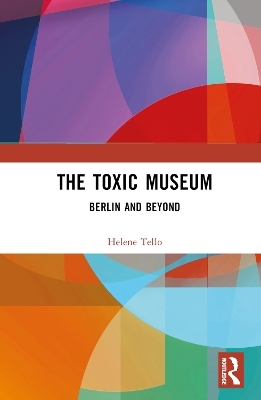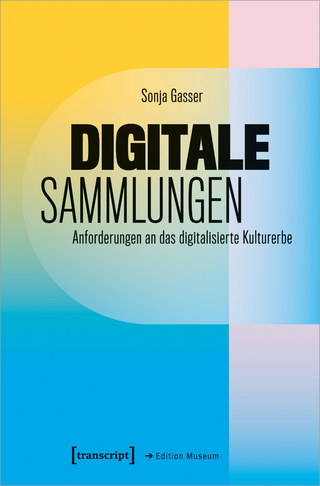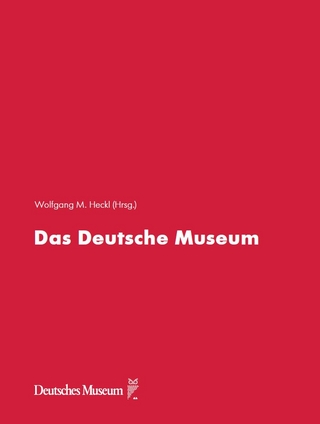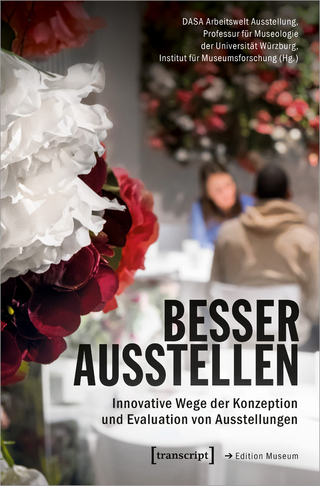
The Toxic Museum
Routledge (Verlag)
978-1-032-52634-8 (ISBN)
It reconstructs the research of substances against harmful insects in museum collections within the historical context of the formation of nation-states, colonialism, a strengthening chemical industry, the First World War, and the resulting broad-based hygiene movement through the lens of the Ethnologisches Museum (Ethnological Museum) in Berlin. Because of their persistence, the consequences of the use of pesticides in museum collections are now unmistakable and well documented in many places. Numerous objects are highly contaminated and are only accessible under difficult conditions regarding occupational health and safety. This creates obstacles for conservation and scientific processing, as well as for mediation in the context of exhibitions and external loans. The most precarious and difficult situations arise when contaminated museum objects are repatriated to their countries of origin. This monograph examines contemporary challenges in the 21st century museum landscape and contextualises the history of pesticide use at the turn of the 20th century.
The Toxic Museum will be of great interest to students and scholars working in conservation, museology, monument preservation, art and cultural studies, ethnology, history, and economics.
Helene Tello has worked as a freelance senior conservator since 2020. After starting her career in 1980, she founded her own conservation studio in 1983. Later, she worked at the Vonderau Museum in Fulda, Germany, and was in charge of the Indian collections at the Ethnologisches Museum of the Staatliche Museen zu Berlin (Ethnological Museum of the National Museum in Berlin), Germany, from 1998 to mid-2020. There, she came across the topic of pesticides used previously on objects. She researches methods for decontaminating cultural assets that have undergone treatment, as well as safe handling practices for all who must handle them. Her expertise has been shared through numerous journal articles, teaching engagements, and lectures given at home and abroad.
PART I Social and political currents from the end of the 19th to the beginning of the 20th century; 1. The nation-state of Prussia, colonialism, and the age of industrialization; 2. The First World War and the hygiene movement; 3. The development of storage and plant protection; PART II Conservation of cultural property from organic materials for the prevention and control of harmful insects in museum collections; 4. Definition of pesticides; 5. Control of wood-destroying insects, textile pests, and harmful insects on natural history objects; 6. Protective and human toxic effect of historical pesticides and their suitability test; 7. Typological recording of pesticides PART III Collecting and preserving cultural assets in Berlin and beyond from the end of the 19th to the beginning of the 20th century; 8. Spatial conditions and personnel requirements for the preservation of collections at the Königliches Museum für Völkerkunde in Berlin from the end of the 19th to the beginning of the 20th century; 9. Explorers, collectors, and adventurers at the Königliches Museum für Völkerkunde in Berlin from the end of the 19th to the beginning of the 20th century; 10. Active ingredients and agents for the protection of persons and goods on expeditions; 11. Developments and experiments on pest control at the Königliches/Staatliches Museum für Völkerkunde in Berlin; 12. Knowledge transfer and product application from industry, commerce, and trade at the Königliches/Staatliches Museum für Völkerkunde in Berlin; 13. Orders and consequences for the use of pesticides at the Königliches/Staatliches Museum für Völkerkunde in Berlin from the end of the 19th to the beginning of the 20th century; 14. Knowledge transfer, exchange, and dissemination of knowledge at the national and international level; 15 Implementation of pest control measures in national and international context during the period under investigation
| Erscheinungsdatum | 03.01.2024 |
|---|---|
| Zusatzinfo | 12 Tables, black and white; 18 Halftones, black and white; 18 Illustrations, black and white |
| Verlagsort | London |
| Sprache | englisch |
| Maße | 156 x 234 mm |
| Gewicht | 689 g |
| Themenwelt | Kunst / Musik / Theater |
| Reisen ► Reiseführer | |
| Geisteswissenschaften ► Geschichte ► Hilfswissenschaften | |
| Sozialwissenschaften | |
| ISBN-10 | 1-032-52634-3 / 1032526343 |
| ISBN-13 | 978-1-032-52634-8 / 9781032526348 |
| Zustand | Neuware |
| Haben Sie eine Frage zum Produkt? |
aus dem Bereich


